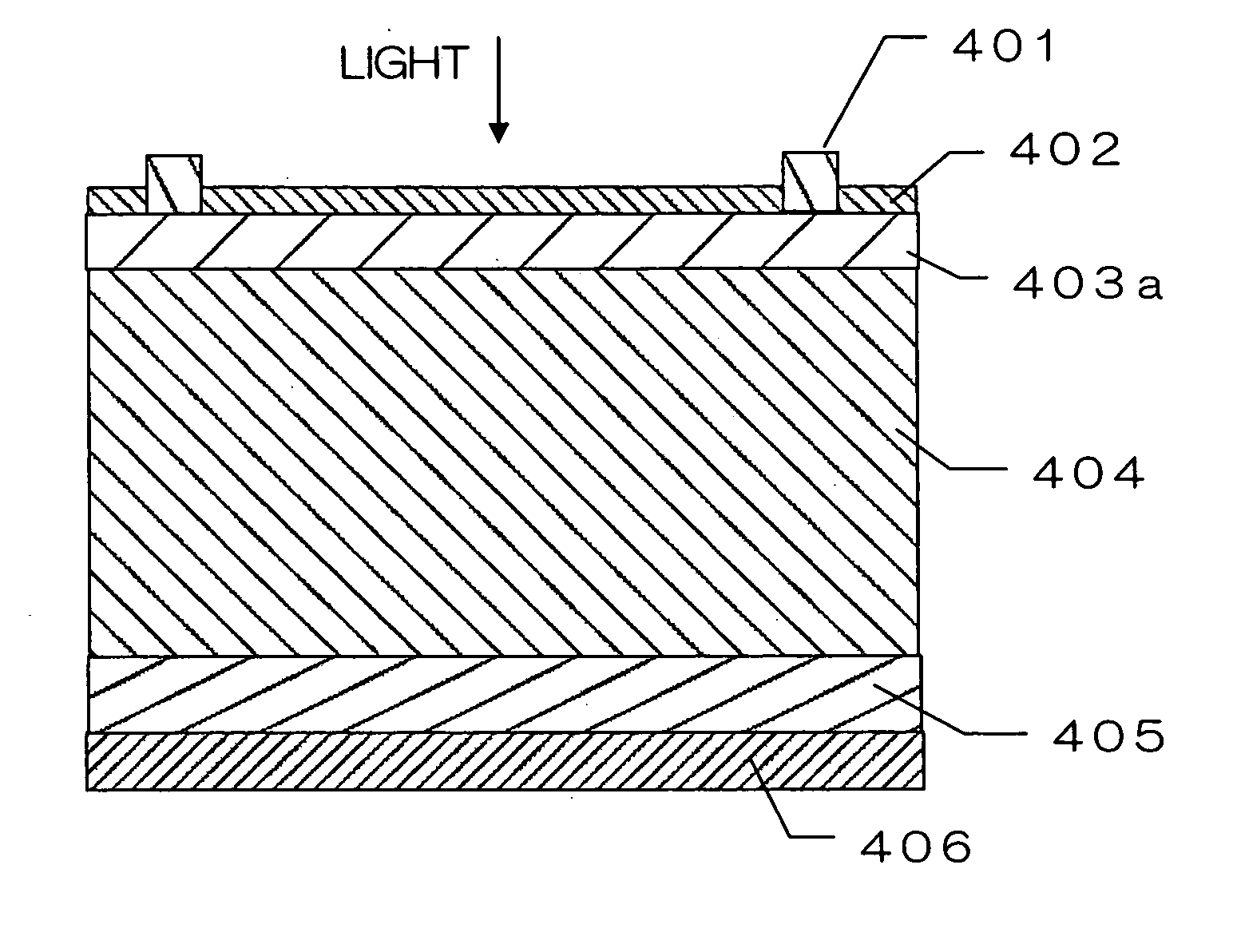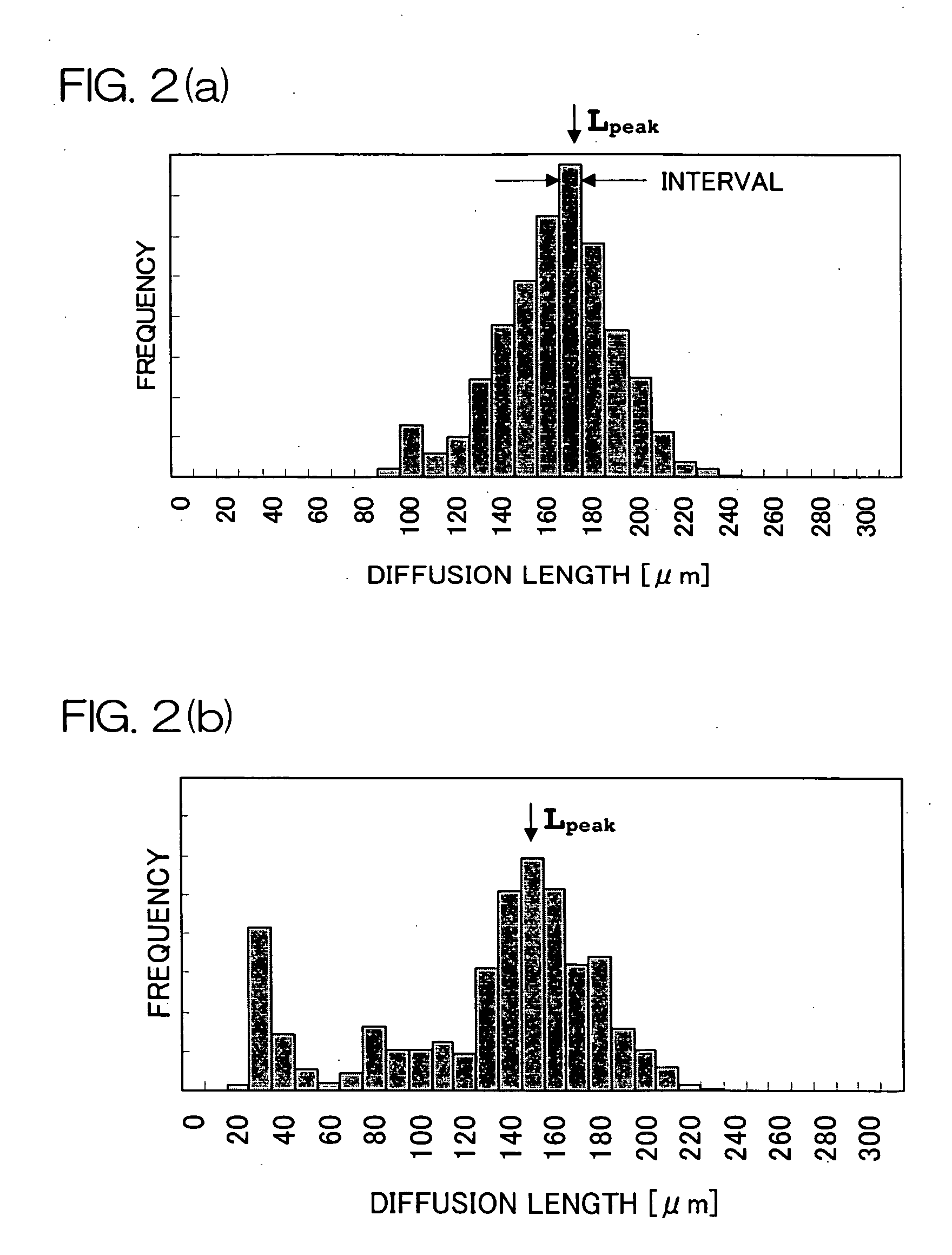Photovoltaic conversion device and method of manufacturing the device
- Summary
- Abstract
- Description
- Claims
- Application Information
AI Technical Summary
Benefits of technology
Problems solved by technology
Method used
Image
Examples
example
[0187] An advantageous effect of the present invention will be described referring to a bulk multicrystalline silicon solar cell element fabricated according to the embodiment above.
[0188] The substrate was-selected among multicrystalline silicon substrates produced by casting to be substrates shown in FIGS. 3 and 4 that have the low quality substrate peripheral regions originating from a side portion of the ingot with characteristic crystal grain configurations, which were used as the boron-doped p-type multicrystalline silicon substrate.
[0189] The dimensions of the substrate were 15 cm square and thickness thereof was 300 μm. [0190] 1) Minority carrier diffusion length of the substrate before processing for a solar cell element (before application of the present invention).
[0191] First, measurements of minority carrier diffusion lengths of these multicrystalline silicon substrates (before processing) were carried out. The measurement apparatus used was a SPV apparatus (Cat. No....
PUM
 Login to View More
Login to View More Abstract
Description
Claims
Application Information
 Login to View More
Login to View More - R&D
- Intellectual Property
- Life Sciences
- Materials
- Tech Scout
- Unparalleled Data Quality
- Higher Quality Content
- 60% Fewer Hallucinations
Browse by: Latest US Patents, China's latest patents, Technical Efficacy Thesaurus, Application Domain, Technology Topic, Popular Technical Reports.
© 2025 PatSnap. All rights reserved.Legal|Privacy policy|Modern Slavery Act Transparency Statement|Sitemap|About US| Contact US: help@patsnap.com



